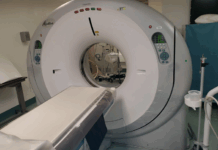As an example, we consider this problem — the development of transport infrastructure and increasing transport accessibility.
The rate on individual transport and the gradual extinction of public transport is the dead end of development that many small Russian cities have chosen, repeating the mistakes previously passed by modern megacities. With all this, it should be noted that the road network of medium and small cities is less adapted to general motorization than, for example, the road network of St. Petersburg or Moscow.
Summing up the above, you can notice that even a small city, for example, Tula, begins to suffocate from car traffic jams, despite the fact that the number of fleet is small relative to the number of residents. Such a turn of events 10 years ago and it was impossible to imagine. With all this, it is much easier here than in the capital to organize the allocated lanes for the movement of public transport, as well as ensure its regular movement. For many medium and small cities in Russia, the development of transport is one of the chances of modernization and accelerated development. On the experience of Grenoble, one can give an example, as thanks to the development of transport infrastructure in all before our eyes from the usual provincial city, it turned into one of the largest centers of France. We can say the same thing about other sectors of the city economy. Wondered energy distribution and communal infrastructure are a very sick place in Russian cities. The evidence of its modernization is understandable to all. The cost of small costs and the introduction of the latest ICTs — solutions can be reduced by thermal and electric energy loss by a quarter.
Innovative development of our country is not possible without mass solvent demand for innovation. The readiness of the administration of Russian cities to apply innovative technologies to solve even the smallest problems today is of state importance.








